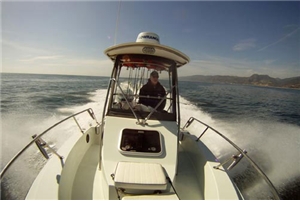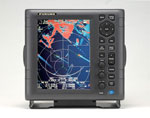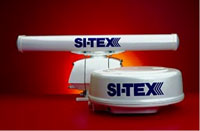GPS Units - Accessories
Autopilots - Marine
Cameras
Chart Plotters
Communications
Dash Cameras
EPIRBs & PLBs
Fitness, Sports & Golf
Fishfinders
Garmin Fitness
GPS-Fishfinders
GPS-GMRS Radios
Maps & Software
Hiking & Handheld GPS
Wearables
Laptop & Tablet GPS
Marine Electronics
Motorcycle Units
Network Systems
Off Road GPS
Radars
Safety Equipment
Starlink Mounts
Stereos & Speakers
Top Choice Products
Tracking Devices
Trolling Motors
Truck & RV GPS
VHF Radios
Accessories
Garmin Accessories
Marine Accessories
Transducers
Actisense
B&G
BilgeBuddy
C-Map Charts
CMOR Charts
Flir Thermal Imaging
Fujinon Marine Binoculars
Furuno Marine Electronics
Fusion Stereos
Garmin GPS
Icom Marine Radios
JL Audio
KVH Satellite TV
Lowrance Electronics
Lumishore LED Lights
Magellan GPS Systems
Navionics Charts
Ocean Signal
Pelican Lights
Poly Planar Stereos
Raymarine Electronics
Scanstrut
Seaview Mounts
Shakespeare
Simrad Marine
Sionyx
Si-Tex Marine Electronics
Standard Horizon
Superior Life Saving Life Rafts
USGlobalSat
Veratron
Vesper Marine
“Choosing The Right Radar for Your Boat and Your Needs”
Boaters today have more choices than ever when it comes to radar technology for their boats. So it’s more important than ever that they choose wisely, for a couple of good reasons. First, radar represents a significant investment in equipment that boaters will likely live with for many seasons. Second, it’s an important piece of technology that, when properly used, has a direct role in safe navigation.
Boaters considering the purchase of a radar have to decide which of the many options is best for their vessel, their needs and their budget. This is where the guidance of an experienced boater and NMEA-certified expert can be immeasurably useful — helping boaters locate the radar that will satisfy their needs for the long run. 
“When I assist customers with the selection process, I begin by asking a series of questions that help us figure out what will best meet their needs,” said Brian Rock of The GPS Store. “While the best choice for any given boater isn’t always the biggest or most expensive system, you also don’t want to make a significant investment in technology that you’re going to outgrow as you gain more experience and spend more time on the water.”
Rock recommends asking yourself these five key questions when searching for a marine radar:
1. What will you use your radar for?
In addition to frequency of operation, you need to think about what you will be using your radar for. If your primary concern is navigating safely through occasional fog or leaving/returning to port in the dark, a less expensive radar dome will meet your needs. If your style of boating has you steaming at night (or any limited visibility conditions) through heavily trafficked waters, you’ll need to track multiple vessels and monitor their movement in relation to you. Features that enhance these capabilities should be high on your wish list. If you’re a serious offshore sportfisherman looking for flocks of distant birds, pinpointing other fishing vessels, or locating weather fronts between you and home, you’re going to prefer the range and target definition that a powerful open array system provides.
2. How often will you use your radar?
If you’re a casual boater or fisherman who isn’t often going to leave the dock before dawn or stay out overnight, one of today’s “basic” radar systems, or adding radar function to a multi-function system, will likely provide the performance you need. Likewise if you’re a “fair-weather boater” not predisposed to heading out in fog or approaching storms. Today’s entry-level radar options will help you navigate through an occasional surprise fog bank or find your way home after dark. On the other hand, if you are the type who cruises/fishes often at night and heads out come hell or high water, you’ll be using your radar more frequently. And you’ll naturally want and expect more features and capabilities from your radar as you gain more experience and confidence operating it.
3. Stand alone radar or multi-function system?
 Adding radar to one of today’s advanced multi-function navigation systems is an affordable and practical way to get color radar technology on your boat. There are pros and cons to going this route, and multi-function displays aren’t the best option for every boater. Using an MFD radar saves valuable helm space while providing a wide array of radar capabilities. It’s also a good choice if overlaying radar onto your electronic charts is important to you. On the minus side, operating the radar features is usually less intuitive than the controls of a dedicated radar. And if the MFD goes down for any reason, you’ve lost everything, including radar. If you boat frequently, are a heavy user of radar features and prefer to have a fully dedicated display (like many commercial users), a stand alone radar will likely satisfy your needs better.
Adding radar to one of today’s advanced multi-function navigation systems is an affordable and practical way to get color radar technology on your boat. There are pros and cons to going this route, and multi-function displays aren’t the best option for every boater. Using an MFD radar saves valuable helm space while providing a wide array of radar capabilities. It’s also a good choice if overlaying radar onto your electronic charts is important to you. On the minus side, operating the radar features is usually less intuitive than the controls of a dedicated radar. And if the MFD goes down for any reason, you’ve lost everything, including radar. If you boat frequently, are a heavy user of radar features and prefer to have a fully dedicated display (like many commercial users), a stand alone radar will likely satisfy your needs better.4. How much space do you have?
 Any boater’s wants, needs and desires have to be tempered with the reality of available space onboard. As much as you might want to pinpoint a single seagull at 30 miles, it’s not practical to mount a 4-foot open array antenna on a 20-foot center console (although it’s been tried). Whether open array or dome style, radar antennas need be free of obstruction and mounted above objects such as rod holders, life rafts, lighting, etc. This can often be achieved using aftermarket mounts designed for the purpose. You also need to consider the safety issue of radar scanner proximity/location to vessel occupants. Too many times we see boaters driving from upper stations with a radome humming away between their legs. We shouldn’t have to tell you why that’s a bad idea. Space considerations/mounting options at the helm also dictate the size/type of display you can use, and whether or not it makes sense to go the stand alone or Multi-Function Display (MFD) route.
Any boater’s wants, needs and desires have to be tempered with the reality of available space onboard. As much as you might want to pinpoint a single seagull at 30 miles, it’s not practical to mount a 4-foot open array antenna on a 20-foot center console (although it’s been tried). Whether open array or dome style, radar antennas need be free of obstruction and mounted above objects such as rod holders, life rafts, lighting, etc. This can often be achieved using aftermarket mounts designed for the purpose. You also need to consider the safety issue of radar scanner proximity/location to vessel occupants. Too many times we see boaters driving from upper stations with a radome humming away between their legs. We shouldn’t have to tell you why that’s a bad idea. Space considerations/mounting options at the helm also dictate the size/type of display you can use, and whether or not it makes sense to go the stand alone or Multi-Function Display (MFD) route.5. How much do you want to spend?
This is one of the biggest questions boaters must face when choosing a radar. For most of us, it’s a significant investment, and budget limitations often end up being the great tiebreaker. You can add radar capability to many MFDs for about $1,000. Stand alone radars that will provide more features and menu options begin at around $1,200 and can go way up from there. The right amount to spend is whatever it takes to get the features that will matter most to you — without overspending on features you’ll rarely if ever use. Conversely, if you save money initially but quickly find yourself wanting/needing features your radar doesn’t deliver, you’ll quickly become dissatisfied. And buying something twice is never a wise business decision. If you and your dealer work as a team to figure out the answers to questions 1-4, you’ll have a much better idea what you really need. From there, it’s just a matter of narrowing down the brands/models that give you what you need at the best price.
 “Here’s an important piece of advice I tell all our customers, said Rock. “Whichever radar system you settle on, make sure to practice with the equipment often in clear, daylight conditions, using all the main functions and features. This is the best time to learn how to operate your radar, not when you need it for safety.”
“Here’s an important piece of advice I tell all our customers, said Rock. “Whichever radar system you settle on, make sure to practice with the equipment often in clear, daylight conditions, using all the main functions and features. This is the best time to learn how to operate your radar, not when you need it for safety.”The GPS Store sells a wide variety of radar systems from all major manufacturers such as Furuno, Raymarine, Garmin, Simrad, Lowrance, and SI-TEX. Its trained staff is happy to help boaters select the best match for their needs, boating lifestyle and budget. Visit www.TheGPSStore.com or call customer service at (910) 575-9544.
For more useful information about marine electronics products, how to use them and how to get the most from them, contact the experts at The GPS Store, Inc. at (800) 477-2611 or visit online at www.TheGPSStore.com.
back to top












